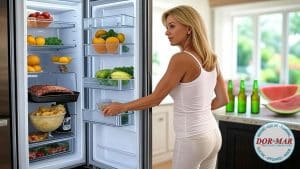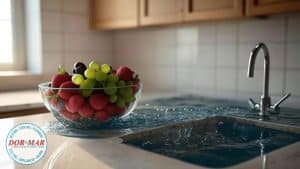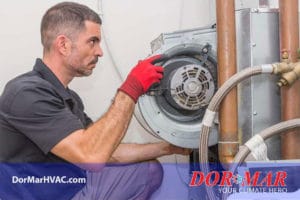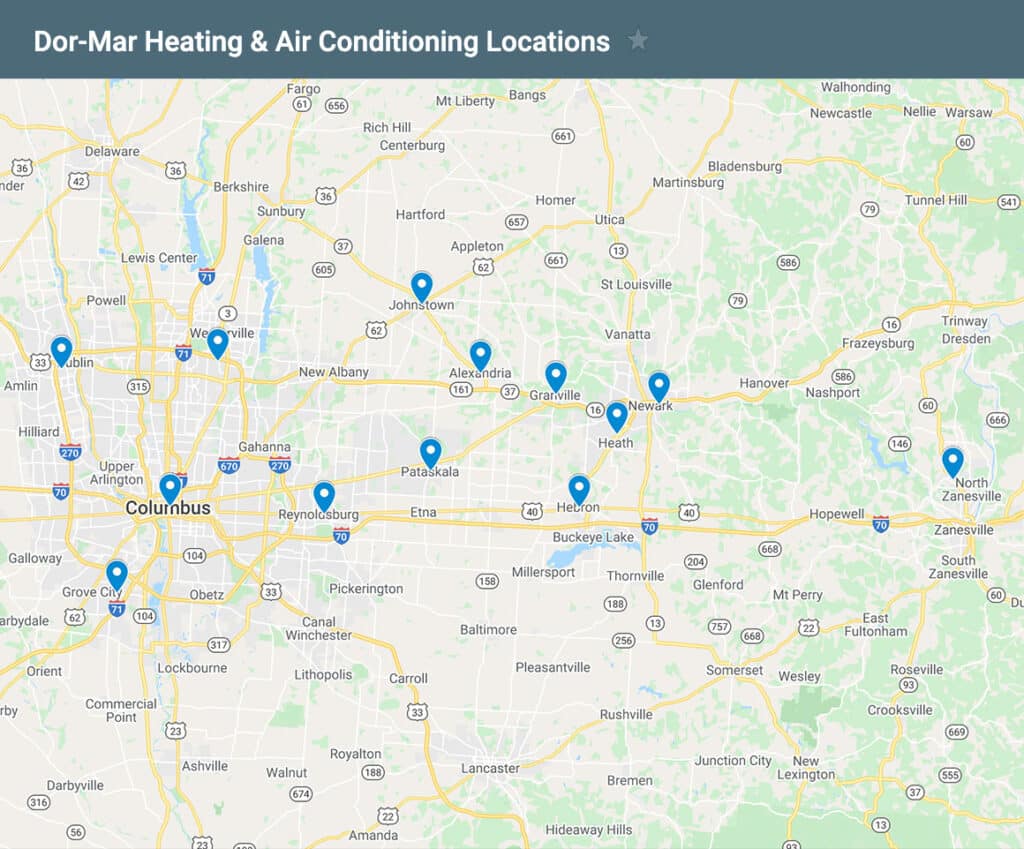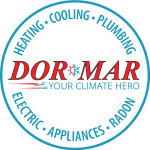Worth the Upgrade Cost?
When it comes time to replace your home’s furnace, you have essentially two options when it comes to efficiency – “standard” or 80% efficiency and “high efficiency” or 95% or more. The energy savings sounds tempting, but is replacing your standard furnace with a high-efficiency unit the best choice? We’ll explain the differences and answer that question here.
Even if you think you’ll make up the difference in the higher cost of a high-efficiency unit by saving energy, it might not be the best choice. Factors include the location of your furnace, your goals for energy efficiency, and other attributes of your home.
What Are the Differences Between 80% and 95% Efficiency Furnaces
Annual Fuel Utilization Efficiency (AFUE) is a thermal efficiency measure of space-heating furnaces and boilers. It is a ratio of useful energy output compared to energy input, expressed as a percentage. An 80% AFUE for a gas furnace, for example, means the furnace outputs 80 BTUs of useful heat for every 100 BTUs of natural gas it burns. The remainder may be wasted heat in the exhaust. Furnaces with 90% or higher AFUE are considered high-efficiency in the HVAC industry.
Isn’t Higher Efficiency Always Better?
If a 95% AFUE furnace is more efficient than and 80% furnace, it would make sense to always buy the most efficient model, wouldn’t it?
Not necessarily. Standard efficiency furnaces work a bit differently than high efficiency one. An 80% efficiency furnace burns natural gas using open combustion by pulling air from the surrounding area, and exhausting the waste up the chimney. A 95% efficiency furnace uses sealed combustion, where the heating unit pulls air in from outdoors instead of using air in the home. A 95% furnace will pull in outdoor air via a dedicated PVC pipe.
Why does any of this matter?
- Cost Difference If your current standard furnace is installed in a crawlspace or vented attic, you probably won’t make up the difference in cost when you install the 95% system. The standard furnace needs combustion air; in a vented space, that combustion air is already available; installing the high-efficiency unit means you’ll have to install extra piping for combustion air to enter from outside. In that case, installation is a bit trickier, so it causes the price to be higher.
- Safety Issues Gases produced by the combustion process in a standard efficiency furnace don’t generally cause a safety risk. If your furnace is in a sealed attic or encapsulated crawl space, open combustion can be a real safety issue. In an invented environment like this, the 95% efficiency furnace is a safer choice, because it will be installed with PVC pipe to draw in outside air and vent the exhaust to the outside.
So current location of the furnace plays a key role in which unit to buy. It’s hard to justify the higher cost of the high efficiency unit in it’s going to be installed in a vented space. It’s also hard to ignore the safety risks of an 80% furnace if it’s getting installed in an enclosed or sealed location.
Additional Factors That Affect Efficiency
AFUE isn’t the only specification you should consider when deciding on a new furnace and heating system. If energy efficiency is important to you, you should also understand the following:
- Stages – One stage, two stage, or modulating
- Airflow – On/Off or variable speed
In a single stage furnace, there are only two running options: off or on, running at full blast. While it’s running, a single-stage furnace blows hot air into your home at its maximum capacity. A two-stage heating system, on the other hand, has a “slow” speed and a full blast speed. The slow speed usually comes out to about 65% of the furnace’s capacity.
It turns out the slower speed is adequate most of the time to keep your home comfortable, and doesn’t require as much energy as a single-stage furnace. In addition, it also runs quieter. With a single stage furnace, you get that “whoosh” of warm air when the heat first comes on. When the furnace is running at slower speed, but can’t keep up enough to get your home’s temperature to the desired setting, the second stage kicks in so the furnace runs at full speed.
Why does this matter? Well, it turns out that both standard, 80% efficiency units and high-efficiency 95% systems are available as single-stage or two-stage units. An 80% efficiency, two-stage furnace will often beat the energy savings of a 95% single stage furnace.
Some 95% efficiency furnaces come equipped with a fully modulating gas valve, which is similar to two stages, but even better. Instead of only two stages, the furnace can operate at varying capacities to dial in the precise heating needs of your home, exactly when needed.
Another available feature is variable speed airflow. Of course, 80% efficiency or standard furnaces can only run at full airflow with no speed variation. However, heating systems with variable speed airflow are better at controlling the amount of hot air that enters your home. Because of this, they are more efficient than a single-stage standard furnace.
What’s the Bottom Line for Furnace Efficiency
Every situation and every home is going to be different, so we recommend you discuss yours with one of our expert HVAC technicians. Of course, you might have a unique situation that doesn’t neatly fit inside our guidelines here.
With that in mind, here are some options:
- 80% Furnace in a Vented Space If this is your current system, you are best to replace it with the same efficiency. If you’d like to get a little more efficiency out of your unit, think about getting a two-stage system with variable airflow instead of the 95% high-efficiency furnace which will require additional construction in your home.
- Encapsulate or Enclosed Space In a crawlspace or attic installation that’s in a very tight sealed space, the 95% furnace makes perfect sense. Think about adding a two-stage or fully modulating unit with variable airflow to increase efficiency even more.
- Furnace Exhausts into an Existing Chimney In this case, it’s possible the chimney liner has been compromised. The best option is a 95% high-efficiency furnace. It is BEST to avoid a situation where exhaust gasses from the furnace are leaking into your living space. If you decide to stay with the 80% model, we highly recommend installing a new chimney liner for your protection.
- Your Top Priority is Energy Efficiency If this is your goal, and price is no object, then a fully-modulating 95% efficiency furnace with variable airflow is your best option.
The best part about this whole scenario? You’ll improve efficiency no matter what. Unless you replace an old furnace with the exact same age/make/model, you’ll increase efficiency only because the newer system will simply be more energy efficient, even at the same AFUE rating.
So, the BIG question is, should you consider the higher AFUE when it’s time to replace your existing heating system? You might not have to spend the extra money to get the higher-efficiency unit, you may be better to just stay with the standard unit.
How We Can Help
Our team offers a broad mix of standard and high-efficiency furnace choices, and a wide array of routine maintenance and emergency services for your heating and cooling system, allowing your family to breathe fresh, safe, clean air and be comfortable year-round. We also offer a number of add-ons to your HVAC equipment that can improve your home’s IAQ, such as electrostatic air filters, whole-house humidifiers, duct cleaning, and more. We can help you make sound choices for your next heating and cooling system.
Schedule an appointment for HVAC system review with us today by using our online contact form, or call one of our seven neighborhood offices listed below. We pride ourselves on our customer-focused service, and our reviews show it.
NEWARK 740.345.6639 • COLUMBUS 614.238.6689 • DUBLIN 614.545.8939 • REYNOLDSBURG 614.365.1579 • WESTERVILLE 614.381.1540 • GROVE CITY 614.595.3098 • ZANESVILLE 740.454.2420
Dor-Mar…Your Climate Hero!


